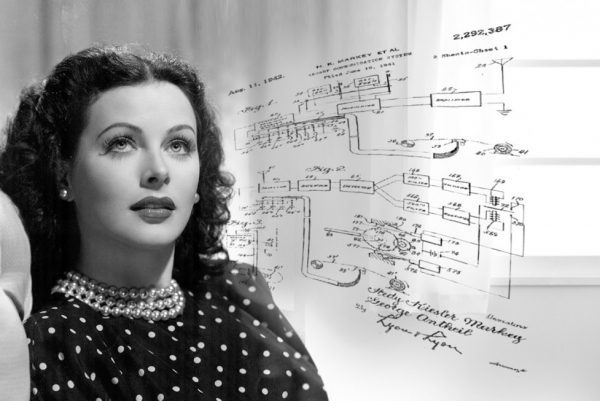The Unlikely Inventor

Tuskegee Airmen Unit
March 23, 2017
Hats Off!
March 31, 2017During the war years, people from all walks of life were motivated to do something to help their country. For Women’s History Month, I was especially excited to discover several women trailblazers who had made significant contributions to the war effort. Yet I was surprised that I had not heard their stories nor knew about their accomplishments. They were hidden or lost in a history that primarily focused on battles and the front lines. Sadly, there was a limited focus on the back stories where women were also diligently working in the trenches.
At first, some of these women were even hesitant to serve while others were not initially aware of the importance of their work. Yet each played a vital role in the overall effort, breaking down barriers of race and gender in military and civilian ranks and opening doors so that more women could serve. From educators to entertainers, inventors and legislators, nurses and secret factory workers, everyone had a stake in winning the war and achieving their common goal: securing peace and bringing their loved ones, friends and neighbors home.
These women would not have described themselves as trail blazers as they did not realize the impact of their efforts. They were all unlikely characters in the real life drama of war. However, from all the stories I uncovered this month, the one that surprised me the most was the story about a beautiful movie star, an immigrant and the inventor of a secret communication system. She absolutely did not fit the image of a serious inventor or a woman with intellectual curiosity and a gifted mind. But, she was all of that and more! Until recently these talents of Hedy Lemarr were largely unknown.
There were many reasons that she did not fit the profile of a serious scientist especially during WWII. She was born in Vienna, Austria in 1914 and did not become a U.S. citizen until November 1953, fifteen years after she came to Hollywood. She had not completed high school, dropping out at age sixteen to become an actress. She had no formal science training and thus no credibility as a scientist. However, she did possess a keen sense of observation, a natural curiosity and knack for problem solving, all important traits of innovators. The major drawback was that she was a woman-a very attractive woman- often described as the most beautiful woman in the world. Sadly, stereotypes limited the reality that beauty and brains could reside in the same body.
Her fellow collaborator, George Antheil was not a scientist either; instead he was a talented avant-garde composer, pianist and out-of-the-box thinker. Their creative minds clicked when they met at a Hollywood dinner party in 1940 and their friendship and collaboration began immediately. Over the next year, they spent many hours designing products and systems that could be extremely useful in the war effort. Finally on June 10, 1941, their efforts paid off, when they applied for a patent for a secret communication system. A short year later on August 11, 1942, they were awarded the patent for their invention: a radio-controlled spread-spectrum, torpedo guidance system.
While their system was never adopted by the Navy for use in WWII, the technology behind their invention found a new life and applications in post-war times. First in 1962, an updated version was installed on Navy ships, but more recently the principles have been incorporated into our modern technology– CDMA (code-division multiple access-essential for our mobile phones), Wi-Fi networks, and Bluetooth. Thank you Hedy and George!

When Hedy Lamarr died on January 19, 2000 at the age of eighty-five, there had been limited public acknowledgement of her scientific achievements. Three years before her death, she and George Antheil (posthumously) had received the Pioneer Award from the Electronic Frontier Foundation. Then in 2014, both she and Antheil were inducted (posthumously) into the National Inventors Hall of Fame. At last her intelligence and innovative contributions were being recognized and honored with programs about her work on both The Science Channel and The Discovery Channel. Hedy’s Folly, published in 2011 is one of the most compelling books about her. Written by Richard Rhodes, author of The Making of the Atomic Bomb, Hedy’s Folly is an important tribute to this multi-talented woman. A more recent tribute to Hedy, in the form of an animated Google Doodle, appeared on November 9, 2015, the anniversary of her 101st birthday.
While Hedy Lamarr died without the full recognition of her early technological genius, her story is an important reminder that genius and innovation can reside in the minds of the most unlikely people -women, girls, minorities, physically challenged and immigrants to name a few. As we end Women’s History month, please take time to listen to other people’s ideas and consider that they may have solutions to some of our nation’s most challenging problems.

